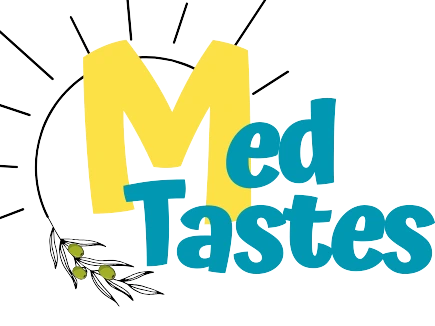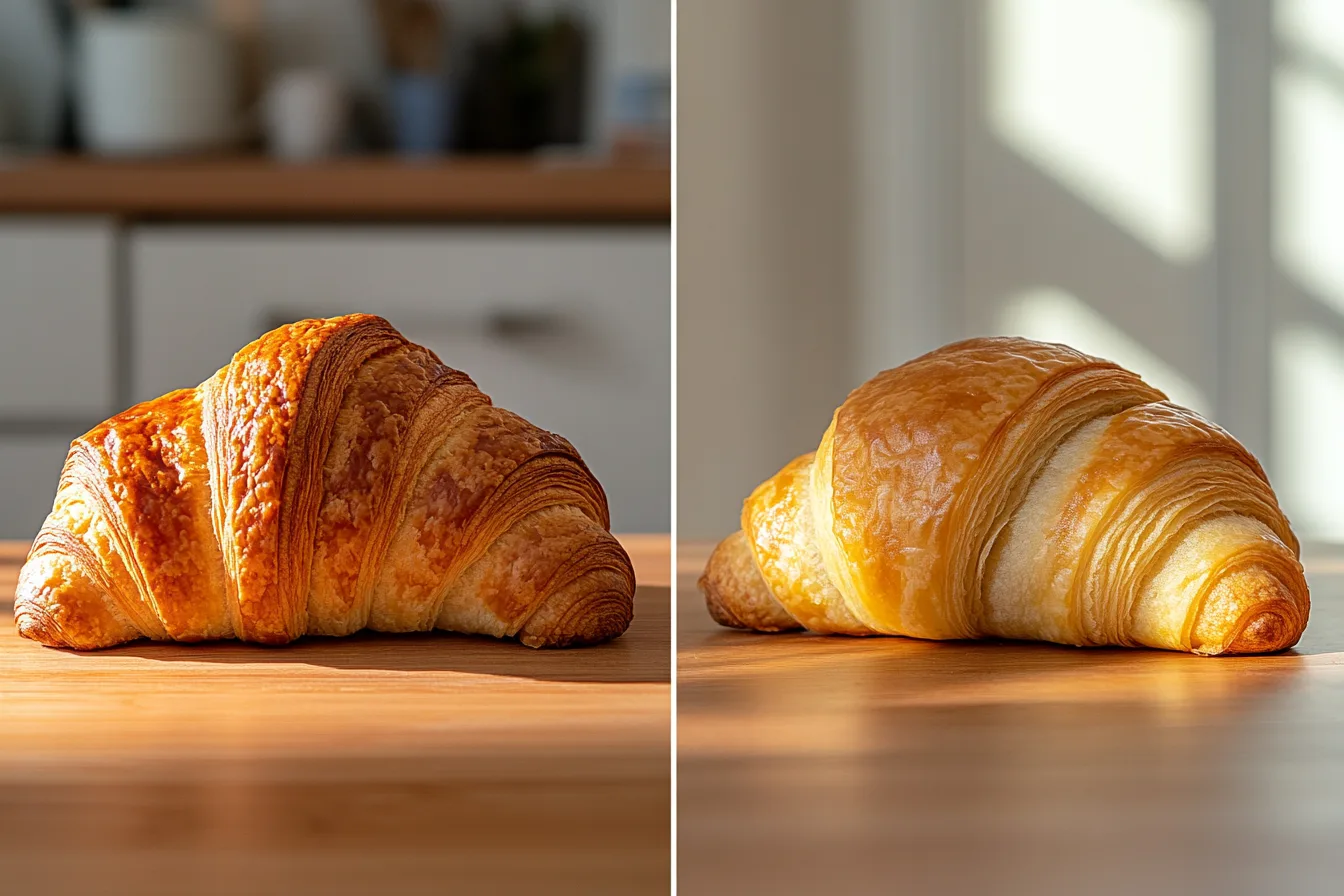Table of contents
Ah, the aroma of freshly baked pastries! There’s nothing quite like it to kickstart your day. But wait, what’s that? You’re standing in front of a bakery display, eyeing two similar-looking treats: the croissant and the gipfeli. They’re both flaky, buttery, and oh-so-tempting, but are they really the same thing? Buckle up, pastry enthusiasts, because we’re about to embark on a mouthwatering journey to uncover the subtle yet significant differences between these two breakfast favorites. From their origins and ingredients to their shapes and cultural significance, we’ll leave no crumb unturned in our quest to know the difference between croissant and gipfeli, the classic French one and its Swiss cousin.
The Origin Story: A Tale of Two Pastries
The Croissant’s French Roots
Let’s kick things off with the croissant, shall we? This crescent-shaped delight has become synonymous with French cuisine, but here’s a plot twist: its origins aren’t as French as you might think! The croissant’s story is as flaky as its layers, with roots tracing back to Austria.
Legend has it that the croissant was born in Vienna during the Ottoman siege of 1683. Bakers, working through the night, heard the Turks tunneling under the city walls and raised the alarm. To celebrate the victory, they created a pastry in the shape of the Ottoman crescent moon. Talk about eating your enemy for breakfast!
However, the croissant didn’t make its grand entrance in France until the 19th century, when an Austrian artillery officer named August Zang opened a Viennese bakery in Paris. The French, being the culinary geniuses they are, took this kipferl (the OG crescent-shaped pastry) and gave it a buttery makeover. Et voilà! The croissant as we know it today was born.
Since then, the croissant has become an integral part of French culinary culture. Not only that, but it has also spread its buttery influence across the globe, becoming a beloved breakfast staple in many countries. Certainly, its journey from Austrian military camps to Parisian cafes and beyond is a testament to its irresistible charm.
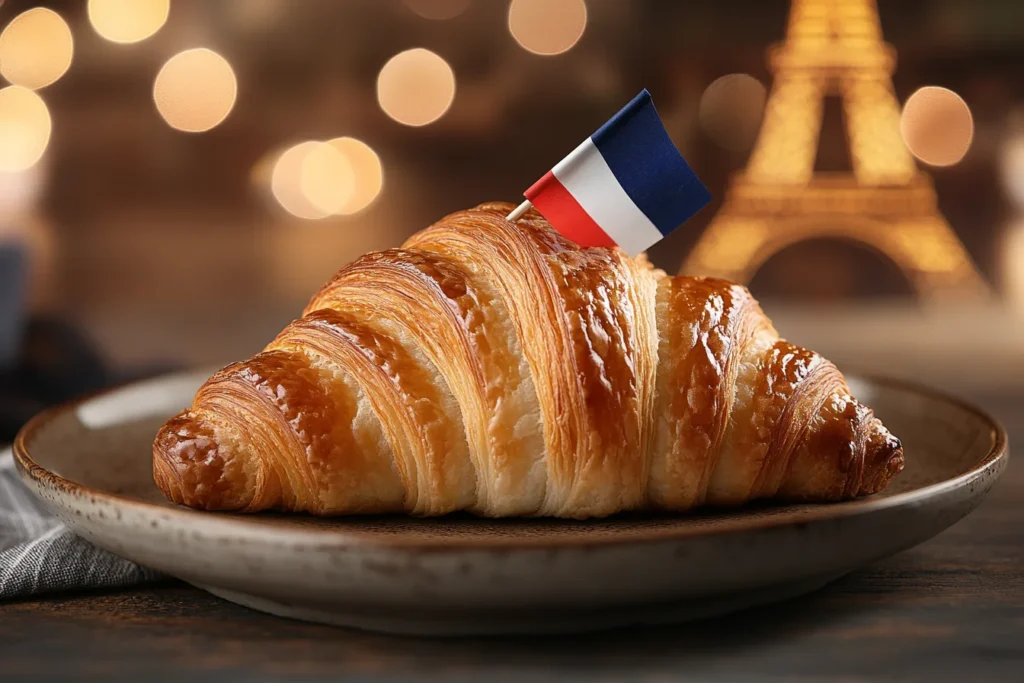
The Gipfeli’s Swiss Twist
Now, let’s hop over to Switzerland and meet the gipfeli. “Gipfeli” is Swiss German for “little tip” or “little corner,” which perfectly describes its shape. But hold your horses – isn’t that just the German word for croissant? Well, yes and no.
The gipfeli is essentially the Swiss take on the Austrian kipferl. It’s like the croissant’s cousin who decided to stay closer to its roots. While the French were busy buttering up their version, the Swiss kept things a bit more traditional.
Gipfeli have been a staple in Swiss bakeries for generations, often enjoyed as part of the iconic Swiss breakfast alongside coffee and bircher muesli. They’re so beloved that even global coffee chains in Switzerland offer gipfeli instead of croissants. Now that’s what I call national pride!
Additionally, the gipfeli has its own unique place in Swiss culture. For example, it’s not uncommon to see Swiss commuters grabbing a gipfeli on their way to work, much like how New Yorkers might grab a bagel. This pastry has become so ingrained in Swiss daily life that it’s hard to imagine a Swiss breakfast without it. Learn more About Gipfeli recipe!
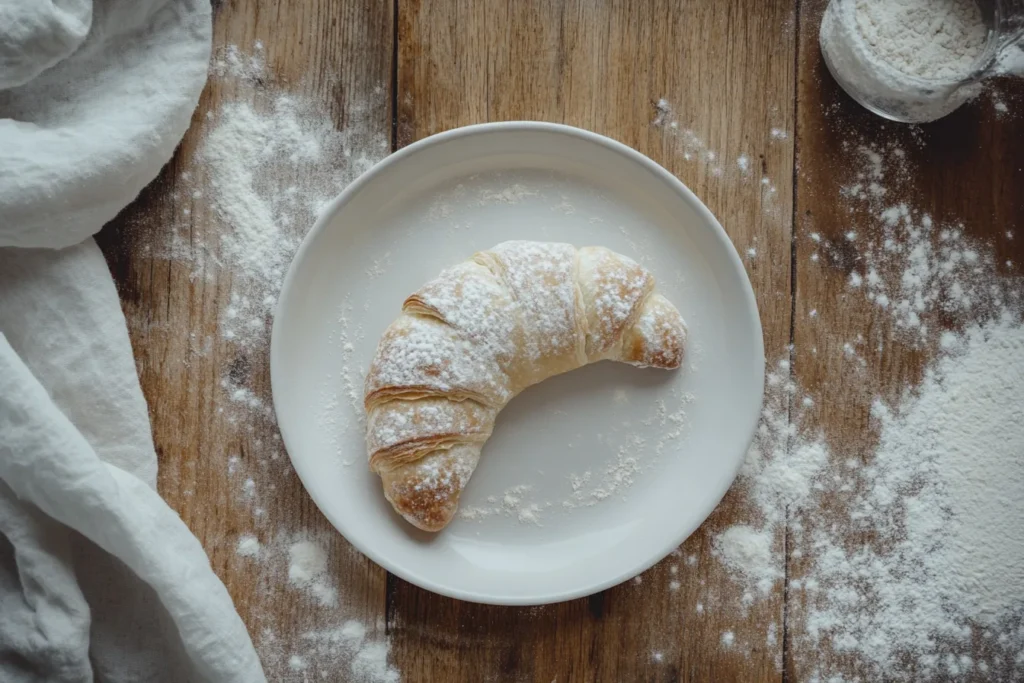
Ingredients
What is the difference between a croissant and a gipfeli?
Croissant’s Buttery Bliss
When it comes to croissants, butter is king. The French weren’t messing around when they decided to amp up the Austrian kipferl. A true French croissant is made with a yeast-leavened dough that’s laminated with layers upon layers of butter. This process, called tourrage, involves folding and rolling the dough multiple times with butter, creating those signature flaky layers that shatter delicately when you bite into them.
Here’s a quick rundown of the basic croissant ingredients:
- Flour
- Yeast
- Salt
- Sugar
- Milk
- Butter (lots of it!)
The result? A pastry that’s rich, flaky, and indulgently buttery. It’s no wonder croissants have become a global breakfast sensation!
Of course, the quality of ingredients plays a crucial role in the final product. For instance, French bakers often use a specific type of flour with a protein content that’s just right for creating those perfect layers. Similarly, the butter used is typically high-fat European-style butter, which contributes to the croissant’s rich flavor and texture.
Gipfeli’s Leaner Profile
Now, let’s talk gipfeli. While they share some similarities with croissants, there are a few key differences in the ingredient list. Gipfeli tend to be a bit leaner and less buttery than their French counterparts. They often include:
- Flour
- Yeast
- Salt
- Sugar
- Milk
- Butter (but typically less than croissants)
- Sometimes egg
The reduced butter content gives gipfeli a slightly different texture – still flaky, but perhaps a touch less indulgent than a croissant. Some bakers even use margarine or a mix of butter and margarine, which can affect the flavor and mouthfeel.
In addition to these basic ingredients, some Swiss bakers add their own unique twists to their gipfeli recipes. For example, you might find versions made with whole wheat flour for a nuttier flavor, or enriched with a touch of honey for added sweetness. These variations showcase the versatility of this beloved Swiss pastry.
Shape and Appearance: Crescent Cousins
What is the difference between a croissant and a gipfeli?
The Croissant’s Iconic Curve
Picture a croissant in your mind. What do you see? I bet it’s that classic crescent shape, right? The word “croissant” literally means “crescent” in French, and these pastries live up to their name. A well-made croissant should have:
- A distinct curved shape
- A golden-brown exterior
- Visible layers on the surface
- A slightly puffy appearance
When you tear into a croissant, you should see a honeycomb-like structure of buttery layers inside. It’s this intricate interior that gives croissants their signature flaky texture.
However, it’s worth noting that not all croissants stick to this traditional shape. In fact, you might come across straight croissants in some bakeries. While these might raise eyebrows among purists, they’re often made this way for practical reasons, such as easier mass production or to fit better in packaging.
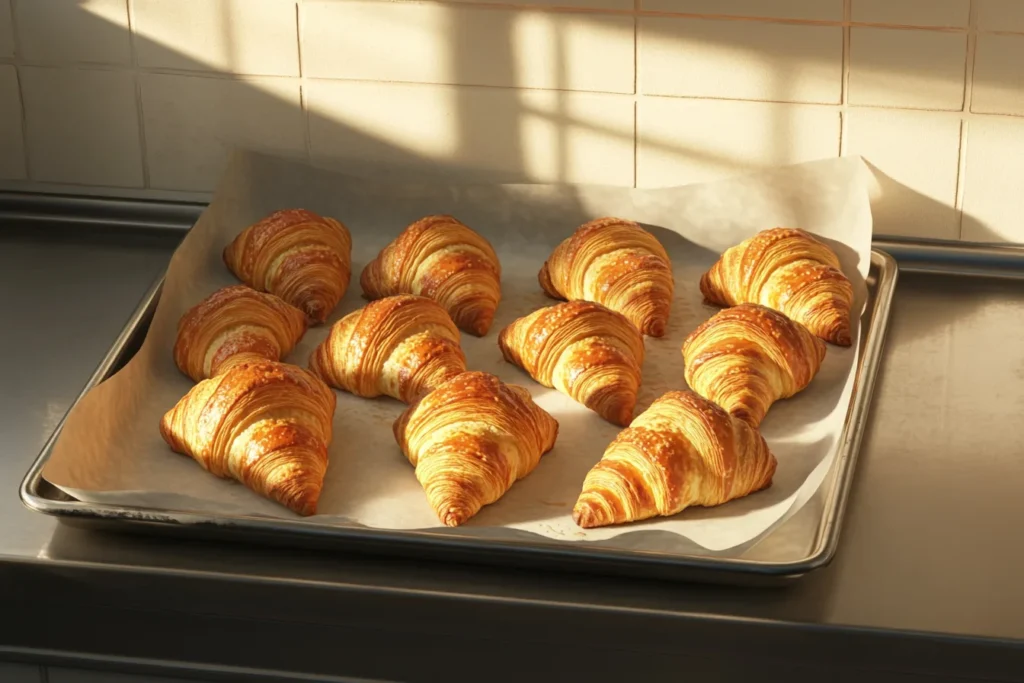
The Gipfeli’s Subtle Differences
At first glance, a gipfeli might look nearly identical to a croissant. But look closer, and you’ll spot some subtle differences:
- Gipfeli are often slightly straighter, with less of a pronounced curve
- They tend to be a bit smaller than croissants
- The ends might be more tapered
- The surface can be smoother, with less visible layering
While both pastries are crescent-shaped, gipfeli sometimes have a more subdued, less dramatically curved appearance. It’s like they’re the shy cousin at the family reunion – similar, but with its own unique charm.
Additionally, the way gipfeli are shaped can vary slightly from bakery to bakery. Some Swiss bakers pride themselves on creating gipfeli with perfectly pointed ends, while others might opt for a slightly rounder shape. These small variations are part of what makes each bakery’s gipfeli unique.
Texture and Taste: A Sensory Experience
What is the difference between a croissant and a gipfeli?
Croissant’s Buttery Explosion
Biting into a croissant is an experience for the senses. Here’s what you can expect:
- A crisp, flaky exterior that shatters slightly
- A soft, airy interior with visible layers
- A rich, buttery flavor that coats your palate
- A subtle sweetness balanced by a hint of salt
The texture of a croissant is all about contrast – the crisp exterior giving way to that pillowy-soft interior. It’s a textural rollercoaster that keeps you coming back for more.
Furthermore, the flavor of a croissant can vary depending on how it’s made. For example, some bakers add a touch of vanilla to their dough for an extra layer of flavor. Others might brush the croissants with an egg wash before baking, resulting in an even more golden, shiny exterior.
Gipfeli’s Subtle Sophistication
Gipfeli, while similar, offer a slightly different sensory experience:
- A crisp exterior, though sometimes less shattery than a croissant
- A slightly denser interior, but still layered and soft
- A milder buttery flavor, sometimes with a hint of egg
- Often less sweet than croissants
The reduced butter content in gipfeli can result in a less rich, but equally satisfying pastry. Some folks even prefer the more subtle flavors of a gipfeli, finding them less overwhelming than their French cousins.
In addition to these characteristics, gipfeli can also have a slightly chewier texture than croissants. This is partly due to the different baking techniques used. While croissants are often baked at a high temperature to achieve that golden, crispy exterior, gipfeli might be baked at a slightly lower temperature for a longer time, resulting in a more even bake throughout.
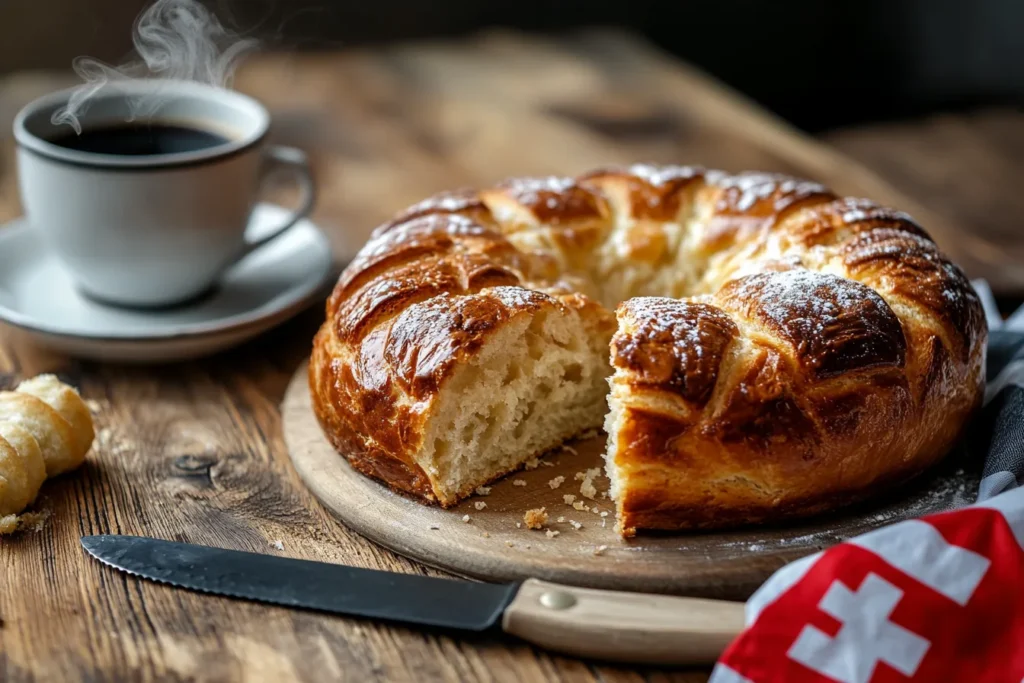
Nutritional Showdown: Croissant vs Gipfeli
What is the difference between a croissant and a gipfeli?
Curious about how these pastries stack up nutritionally? Let’s break it down:
| Nutrient (per 100g) | Croissant | Gipfeli |
|---|---|---|
| Calories | 406 | 380 |
| Total Fat | 21g | 18g |
| Saturated Fat | 13g | 10g |
| Carbohydrates | 45g | 47g |
| Protein | 8g | 9g |
| Sodium | 450mg | 400mg |
As you can see, gipfeli tend to be slightly lower in calories and fat, thanks to their leaner recipe. However, both pastries are still indulgent treats best enjoyed in moderation. After all, life’s too short to skip the good stuff entirely!
It’s important to note that these nutritional values can vary depending on the specific recipe and preparation method. For instance, a croissant made with margarine instead of butter might have a different fat profile. Similarly, a gipfeli enriched with egg might have slightly higher protein content.
Moreover, while neither pastry would be considered a health food, they can still be part of a balanced diet when consumed in moderation. Both provide carbohydrates for energy and some protein. Plus, the joy of eating a delicious pastry certainly counts for something in terms of overall well-being!
Cultural Significance: More Than Just Breakfast
What is the difference between a croissant and a gipfeli?
Croissant: A Symbol of French Cuisine
The croissant has become more than just a pastry – it’s a cultural icon. Here’s why:
- It’s a staple of the classic French breakfast
- Croissants are often used in sandwiches and other dishes
- They’ve become a global symbol of French culinary expertise
- There’s even a World Croissant Day celebrated on January 30th!
In France, the quality of a bakery is often judged by its croissants. It’s serious business, folks!
Furthermore, the croissant has inspired countless variations and spin-offs. For example, you might come across chocolate croissants (pain au chocolat), almond croissants, or even savory versions filled with ham and cheese. These variations showcase the versatility of this beloved pastry and its ability to adapt to different tastes and trends.
Gipfeli: A Swiss Morning Ritual
While perhaps less internationally famous, gipfeli hold a special place in Swiss culture:
- They’re a crucial part of the traditional Swiss breakfast
- Gipfeli are often served in hotels and at business meetings
- They’re a popular on-the-go snack for busy Swiss commuters
- Many Swiss bakeries pride themselves on their unique gipfeli recipes
In Switzerland, starting your day without a gipfeli is like starting a car without fuel – technically possible, but why would you want to?
Additionally, gipfeli have their own unique cultural associations in Switzerland. For instance, they’re often enjoyed during “Znüni” and “Zvieri”, the Swiss German terms for mid-morning and mid-afternoon snack breaks. These breaks are an important part of Swiss work culture, and gipfeli are a popular choice for these moments of respite.
The Baking Process: Artistry in Action
What is the difference between a croissant and a gipfeli?
Croissant: A Labor of Love
Making croissants is no easy feat. It’s a process that requires patience, precision, and a whole lot of butter. Here’s a simplified breakdown of the croissant-making process:
- Make the dough: Mix flour, yeast, sugar, salt, and milk.
- Prepare the butter block: Shape cold butter into a rectangle.
- Laminate the dough: Encase the butter block in dough and fold repeatedly.
- Rest and chill: Allow the dough to rest between folds.
- Shape: Cut and shape the dough into crescents.
- Proof: Let the shaped croissants rise.
- Bake: Until golden brown and flaky.
This process can take up to three days from start to finish! No wonder croissants are considered such a special treat.
Gipfeli: Swiss Precision
While the process for making gipfeli is similar to that of croissants, there are some key differences:
- The dough: Often less enriched with butter.
- Lamination: Fewer folds, resulting in fewer layers.
- Shaping: Typically straighter with more pointed ends.
- Proofing: May be shorter due to the leaner dough.
- Baking: Often at a slightly lower temperature for a longer time.
These differences in the baking process contribute to the unique characteristics of gipfeli. For example, the lower butter content and fewer folds result in a slightly less flaky, but still delicious pastry.
Serving Suggestions: Elevating the Experience
What is the difference between a croissant and a gipfeli?
Croissant: Versatile Indulgence
Croissants are incredibly versatile. Here are some popular ways to enjoy them:
- Plain, with a cup of café au lait for a classic French breakfast
- Sliced and filled with ham and cheese for a quick lunch
- Toasted and spread with jam for a sweet treat
- Used as a base for bread pudding in desserts
Moreover, some creative chefs have taken the croissant to new heights. For instance, the “cronut” – a croissant-donut hybrid – took the culinary world by storm a few years ago. This shows how the humble croissant continues to inspire culinary innovation.
Gipfeli: Swiss Simplicity
Gipfeli are often enjoyed in simpler ways, reflecting Swiss culinary traditions:
- Eaten plain alongside coffee or hot chocolate
- Served with a selection of jams and butter
- Split and filled with cheese or cold cuts for a heartier snack
- Dunked in coffee (though some might consider this sacrilege!)
Additionally, some Swiss bakeries offer savory versions of gipfeli, flavored with cheese or herbs. These make for a delicious alternative to the classic sweet version and are particularly popular as an afternoon snack.
Ready for more baking ideas? Dive into other recipe guide and uncover exciting new paths for your next pastry project
FAQs: Curiosities About Croissants and Gipfeli
Q: Are croissants and gipfeli suitable for vegetarians?
A: Traditional croissants and gipfeli contain butter, making them suitable for lacto-vegetarians but not vegans. However, vegan versions using plant-based fats are becoming more common.
Q: Can I freeze croissants or gipfeli?
A: Yes, you can freeze both pastries. Wrap them tightly in plastic wrap and aluminum foil before freezing. To reheat, thaw at room temperature and then warm in the oven for a few minutes.
Q: Which is healthier, a croissant or a gipfeli?
A: Gipfeli tend to be slightly lower in calories and fat due to their leaner recipe. However, neither pastry would be considered a health food. Enjoy them as an occasional treat!
Q: How long do croissants and gipfeli stay fresh?
A: Both pastries are best enjoyed on the day they’re baked. However, they can be stored in an airtight container at room temperature for 1-2 days, or in the refrigerator for up to a week.
